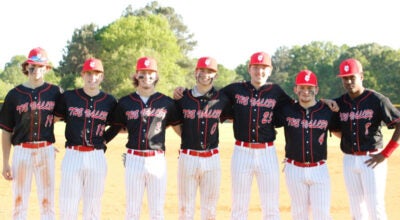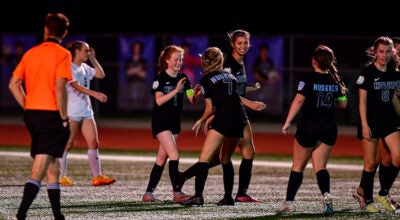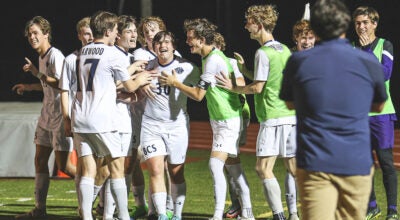What are these kids looking at?
Published 2:48 pm Thursday, April 3, 2014

Meadow View Elementary School students observe wildlife at the University of Montevallo’s Ebenezer Swamp during a visit on April 3. (Reporter Photo/Jon Goering)
By NEAL WAGNER / Managing Editor
MONTEVALLO – For a few days during the week of March 31-April 4, gifted students at Alabaster’s Meadow View Elementary School took their lessons out of the classroom and into the swamp.
Throughout the week, MVES gifted resource teacher Chaille Raines led groups of second-grade students through the University of Montevallo’s Ebenezer Swamp off Shelby County 24 near the Alabaster-Montevallo line.
During the tours, the students were given cameras, binoculars, journals, GPS systems and compasses as they traversed the swamp.
“These students learn about systems, how systems change, how values affect systems and the interdependence of all systems at work in the swamp,” Raines wrote in an email.
Raines said the kids learned to recognize trees by their bark, leaves and shape, and locate springs feeding the swamp.
The kids’ favorite part of the visits came when they were able to spot wildlife in the swamp ranging from barred owls, herons, turtles, turkeys, geese, egrets, wood ducks, snakes, squirrels and rabbits, Raines said.
“Tracks of opossum, raccoon and beaver are often discernible in the mud and on the boardwalk,” Raines wrote. “They have spotted evidence of beaver from gnawing marks on Tupelo gum trees. Observations invariably lead to questions and research.”
While touring the swamp, the kids often discover a mystery to solve, Raines said. During a recent trip, kids determined a raccoon had raided a bird nest and broken multiple eggs after finding broken eggs and bird feathers at the base of a tree.
“Death and decay are as much a part of the story in the swamp as life and death,” Raines wrote. “Students understand the workings of the nutrient cycle and the system nature has developed to recover important nutrients for reuse.
“Somehow, coming face-to-face with this drama teaches all of us important lessons in life,” Raines wrote.









